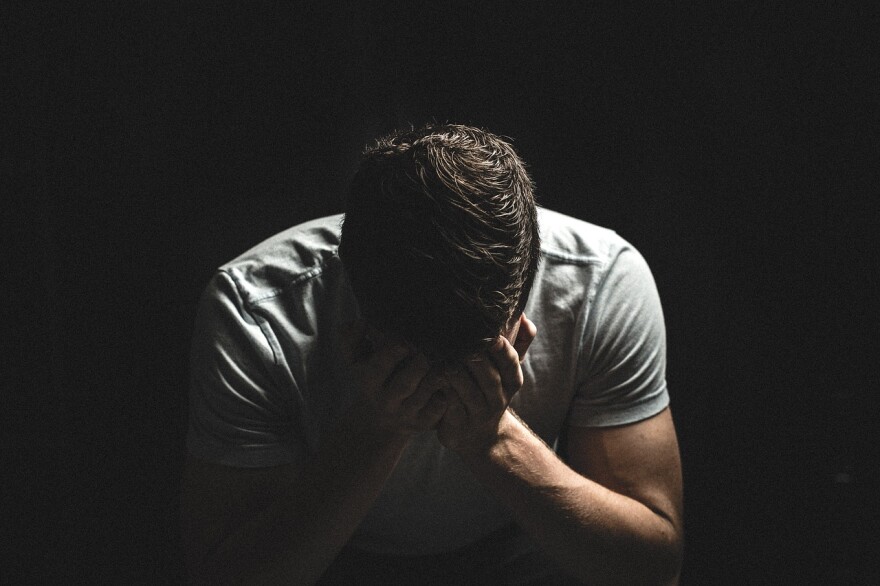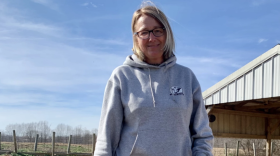Seasonal Affective Disorder (SAD) is a type of depression that comes and goes with the changing seasons. SAD is a common phenomenon that often clashes with the holiday-filled winter months, but its symptoms do not have to be unavoidable or unmanageable. Michael Bordieri, Murray State professor of psychology, visits Sounds Good to discuss this wintry shift in mood.
According to the National Institute of Mental Health, Seasonal Affective Disorder is a type of depression that displays a recurring seasonal pattern. To be diagnosed with SAD, an individual must meet full criteria for major depression coinciding with specific seasons (appearing in the winter or summer months) for at least two years.
Symptoms of major depression include: feelings of hopelessness or worthlessness, low energy, lost interest in activities once enjoyed, problems with sleep, changes in appetite or weight, feeling sluggish or agitated, difficulty concentrating, and frequent thoughts of death or suicide. Symptoms of the winter pattern of SAD can include overeating and weight gain, hypersomnia, low energy, cravings for carbohydrates, and social withdrawal. Individuals can also suffer from a summer pattern of SAD, which includes poor appetite with associated weight loss, restlessness, agitation, anxiety, and episodes of violent behavior.
Although an exact cause for Seasonal Affective Disorder is unknown, environmental, biological, and behavioral factors can provide greater insight into what causes these episodes. Behavioral activation, Bordieri explains, is the "idea that we tend to be happy and engaged with our world when we're doing lots of things and coming into contact with all sorts of reinforcers and rewards." With colder weather and icy or snowy conditions, people are drawn indoors for greater lengths of time. "Within depression, one of the major drivers of it is the psychological narrowing of the world. There's less reinforcers available, people are getting less from doing things, and it makes sense in that environment to withdraw and turn inward," Bordieri says.
The role of sunlight in SAD has also been researched, although some studiessuggest that SAD is not only unaffected by the sun, but a folk psychology phenomenon unsupported by objective data. Even still, light therapy has been a main form of SAD treatment since the 1980s. A Harvard health blogdescribes light therapy as "sitting close to a special 'light box' for 30 minutes a day, usually as soon after waking up as possible. These boxes provide 10,000 lux ('lux' being a measure of light intensity). That's about 100 times brighter than usual indoor lighting; a bright sunny day is 50,000 lux or more." Medications (like SSRIs), increased vitamin D intake, and psychotherapy are other possible solutions to SAD. However, no two individuals experiencing Seasonal Affective Disorder are alike, and other mental or physical disorders can interfere with these therapy options. A mental health professional should always be consulted before undergoing any form of SAD therapy.
"We like it when we can find a single cause," Bordieri explains, but the answer is not that simple. "Science suggests it's a more complex picture -- light could be a piece, biological predisposition, genetics, and the brain...but the environment is important too." Attributes out of one's control can often increase the risk of SAD, including being female, having a history of depression or bipolar disorder, or even being a younger adult, as opposed to an older one. People with SAD might have trouble with serotonin regulation, melatonin production, Vitamin D production, or a lack of social support. If you are unable to seek help from a mental health professional to determine your specific mental health history and SAD treatment plan, hope is not completely lost.
During a time of the year normally associated with holidays, homecomings, and fellowship, Bordieri says "now is a good time to think about, you know, what you have in your life that helps you get that social support and also, how you can be a support for others during the holidays. Give them different activities, it doesn't have to be anything big. It could be as simple as getting together for a cup of coffee, taking a quick walk, calling and touching base with a friend you haven't heard from in a while, could be ways to help build a community that can make us more robust and protect us from depression as well."






